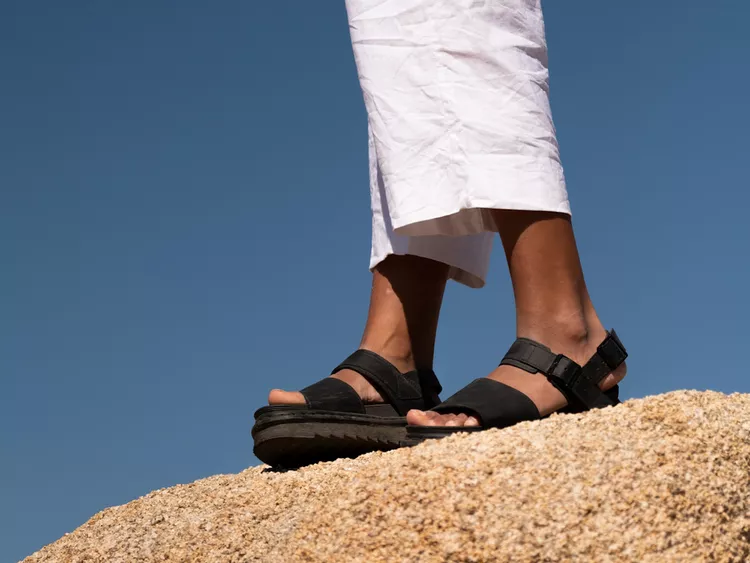Sweating is a natural mechanism to cool the body, but when it comes to excessive foot sweating, it can lead to discomfort and potential health issues. Hyperhidrosis of the feet is a condition that goes beyond the norm, causing problems like foot odor, blisters, and fungal infections. This guide explores ten effective ways to manage excessive feet sweating, offering solutions that can be implemented at home or with the guidance of a medical professional.
1/ Keep Your Feet Clean and Dry
Start by maintaining proper foot hygiene. Wash your feet with antibacterial soap daily and ensure thorough drying, especially between the toes. This basic step helps prevent bacterial and fungal growth, reducing foot odor and the risk of infections.
2/ Wear Moisture-Wicking Socks
Opt for socks made from natural fibers like cotton or moisture-wicking synthetic materials. These choices help keep your feet dry by drawing moisture away. Change your socks daily, or more frequently if necessary, especially after exercising or exposure to warm environments.
3/ Choose Breathable Shoes
Select ventilated and breathable shoes made from natural materials. Give your shoes time to dry out between wears by rotating them. This prevents the development of odor-causing germs and helps maintain a healthier foot environment.
4/ Use Absorbent Shoe Inserts
Enhance your shoes’ sweat-proofing capabilities by adding specialized insoles or inserts. Materials like charcoal or cedar offer odor control, moisture absorption, and additional support. Regularly replace moisture-absorbing pads inside your shoes for optimal effectiveness.
5/ Try a DIY Foot Soak
Explore do-it-yourself foot soaks using natural ingredients. Options like apple cider vinegar, Epsom salts, and black tea provide astringent properties, reduce sweat gland size, balance pH, and offer antibacterial effects. Incorporate these foot soaks into your routine to combat excessive feet sweating.
6/ Use Over-the-Counter Foot Antiperspirants
Accessible over-the-counter foot antiperspirants containing aluminum salts can be an effective first line of defense against hyperhidrosis. These products, available as sprays or wipes, help control sweating by plugging sweat glands. Clinical strength options with aluminum zirconium trichlorohydrex offer advanced solutions.
7/ Consider Prescription Antiperspirants
For more severe cases, consult a dermatologist who may prescribe stronger antiperspirants. These prescription options can provide enhanced effectiveness in managing hyperhidrosis of the feet.
8/ Explore Oral Medication
Oral medications such as anticholinergics may be recommended for clinically diagnosed hyperhidrosis. These medications inhibit sweat-stimulating impulses, resulting in overall reduced sweating. Consult with a healthcare professional to explore suitable options.
9/ Try Botox Injections
Botox injections are a viable option to address excessive feet sweating. By blocking the release of acetylcholine, which triggers sweat gland activity, Botox offers relief. Although the procedure may cause temporary discomfort, the results can last between three to six months.
10/ Inquire About In-Office Treatments
Explore in-office treatments like iontophoresis, involving the application of electric current through water trays to reduce sweating. For more severe cases, endoscopic thoracic sympathectomy (ETS) is a surgical option that involves cutting or clamping sweat-regulating nerves. Discuss these procedures with a dermatologist to determine their appropriateness.





Comments are closed.